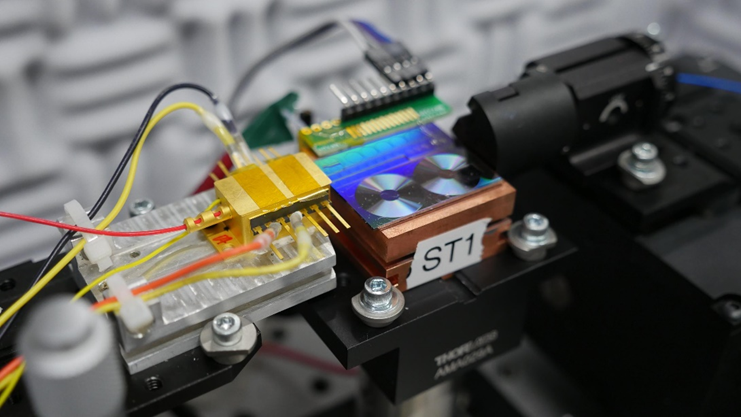NIST has created a technology that turns light into microwaves and changes the measurement of time.
Researchers at the National Institute of Standards and Technology (NIST) have developed a revolutionary time-measuring microchip that can convert light into microwaves. The discovery promises to significantly improve GPS systems, mobile communications and the Internet, as well as the accuracy of radars.
Improvements will apply to all technologies that depend on high-precision time measurement and communications, thanks to the reduction of phase jitter (jitter) – small random changes in the time of microwave signals.
NIST researchers have reduced the jitter rate to a tiny fraction of a second – 15 femtoseconds, which is a very significant achievement, given that a femtosecond is one quadrillionth of a second.

Chip for converting light to microwave signals
NIST's new technology significantly outperforms traditional microwave sources, improving signal stability and accuracy, which can improve the sensitivity of radars, the accuracy of analog-to-digital converters, and lead to clearer astronomical images using groups of telescopes.
In addition, the new NIST technology is compact. While previously such results required a system the size of a desktop, now the research team has managed to reduce many components to the size of a chip comparable in size to a camera memory card. Reducing the size and power consumption makes the technology more suitable for use in everyday devices.
Currently, the components required for the NIST microchip are located outside the chip itself to test their effectiveness. However, the team plans to combine all the parts, including lasers, modulators, detectors, and optical amplifiers, on a single chip. Combining components will reduce size and power consumption, and make it easier to integrate the system into small devices without the need for training or significant power consumption.
Researchers at the National Institute of Standards and Technology (NIST) have developed a revolutionary time-measuring microchip that can convert light into microwaves. The discovery promises to significantly improve GPS systems, mobile communications and the Internet, as well as the accuracy of radars.
Improvements will apply to all technologies that depend on high-precision time measurement and communications, thanks to the reduction of phase jitter (jitter) – small random changes in the time of microwave signals.
NIST researchers have reduced the jitter rate to a tiny fraction of a second – 15 femtoseconds, which is a very significant achievement, given that a femtosecond is one quadrillionth of a second.

Chip for converting light to microwave signals
NIST's new technology significantly outperforms traditional microwave sources, improving signal stability and accuracy, which can improve the sensitivity of radars, the accuracy of analog-to-digital converters, and lead to clearer astronomical images using groups of telescopes.
In addition, the new NIST technology is compact. While previously such results required a system the size of a desktop, now the research team has managed to reduce many components to the size of a chip comparable in size to a camera memory card. Reducing the size and power consumption makes the technology more suitable for use in everyday devices.
Currently, the components required for the NIST microchip are located outside the chip itself to test their effectiveness. However, the team plans to combine all the parts, including lasers, modulators, detectors, and optical amplifiers, on a single chip. Combining components will reduce size and power consumption, and make it easier to integrate the system into small devices without the need for training or significant power consumption.
